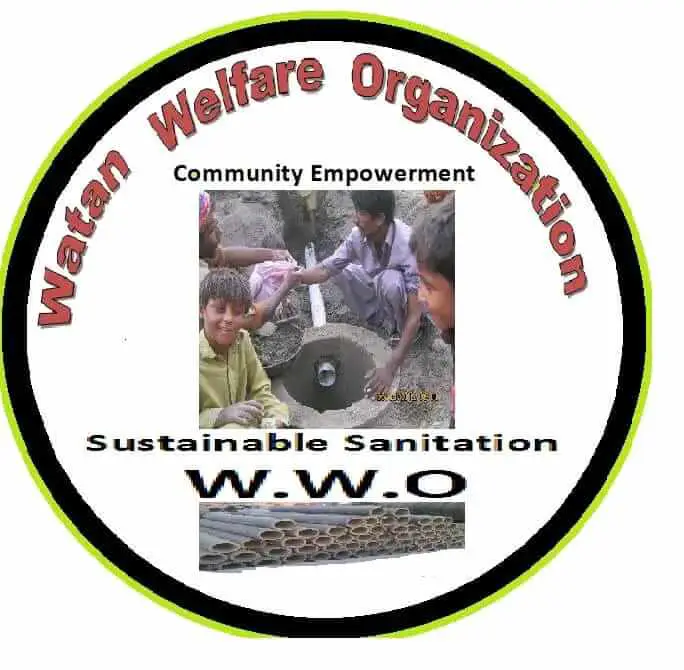HANDS
The importance of hand hygiene and germ-free practices

Hand washing definition
Hand hygiene definition is the act of cleaning the hands with water and hand washing liquid soap or sanitizers to remove dirt, germs, and bacteria. Hands are an extraordinary part of the human body, symbolizing connection, support, and love. They serve as the primary means of interaction and communication, bridging gaps between individuals. A father’s hand gently guiding a child, or a lover’s hand tenderly shaking with their partner, reflects affection and care.
However, along with the immense power to express love, these also play a significant role in the transmission of germs and pathogens. Touching objects, surfaces, and other infected people can inadvertently spread harmful bacteria, leading to the potential spread of diseases and infections. Hence, it becomes vital to prioritize hand hygiene to safeguard the well-being of our loved ones and people arround us.
On May 5th, the World Health Organization observed World Hand Washing Day, an annual campaign dedicated to promoting hand hygiene’s importance in healthcare settings. This hand hygiene day serves as a global platform to raise awareness, mobilize action, and accelerate progress in implementing effective hand hygiene practices.
The focus of World Hand Hygiene Day was on civil society organizations (CSOs) and their unique capacity to drive change at local, national, and international levels. CSOs, driven by their passion, values, and social justice agendas, often have close connections with the communities they serve, making them valuable partners in advancing good hygiene practices initiatives.
WHO recognized that hand hygiene is not only crucial for preventing infections but also serves as a sign of respect for those seeking care. Proper hand hygiene not only protects patients but also safeguards the health and well-being of healthcare workers, creating a safer environment for all.
During the campaign, WHO called upon CSOs and partner organizations, such as members of the Global IPC Network, to actively engage and collaborate in efforts to achieve effective good hygiene practices at the point of care. By harnessing the collective strength and commitment of health workers, policymakers, and civil society, WHO aimed to accelerate progress and bridge existing gaps in infection prevention and control.
The COVID-19 pandemic highlighted the importance of good hygiene practices and infection prevention, underscoring the need to learn from the crisis and invest in closing the disparities in implementing robust infection prevention measures.
Maintaining cleanliness serves as a proactive measure to prevent the transmission of germs. By adopting simple yet effective good hygiene practices like regular handwashing, we can significantly reduce the risk of spreading infections. Proper handwashing involves using any hand washing liquid soap and clean water, rubbing palms together for 20 seconds, ensuring thorough coverage of all surfaces, and then rinsing and drying them properly.
Additionally, using alcohol-based hand hygienic solutions when hand washing liquid soap and hand washing liquid is not readily available can also help eliminate harmful germs. These sterilizers should contain at least 70% alcohol content for maximum effectiveness. However, it’s important to note that sanitizers are not a substitute for proper handwashing, but rather a temporary solution.
By embracing good hand hygiene habits, we demonstrate our commitment to the well-being of those we love. Cleanliness not only protects our loved ones but also contributes to the overall health of our communities. Whether we are parents, partners, friends, or colleagues, practicing hand hygiene shows our responsibility toward creating a safe and healthy environment.
Let us remember that our hands are the bridges that connect us, and it is in our hands to keep them clean and hygienic. Together, through simple acts like handwashing, we can foster a world where love and care are shared while minimizing the risk of illness and ensuring the safety of our cherished ones.
We will explore hand hygiene and the topic to cover shall be as under
- Proper hand washing technique: The importance of covering all surfaces, including fingertips and wrists
- The Science of Handwashing: Effective Germ Removal with Soap, Hand Washing Liquid, Friction, and Technique
- The Effectiveness of Hand Sanitizers: When and How to Use Them
- Good hygiene practices in Healthcare Settings: Protocols, Best Practices, and Infection Prevention
- Promoting Hand Hygiene in the Workplace: Strategies and Education for Compliance
- Teaching Children about Hand Hygiene: Strategies and Engaging Approaches
- The Impact of Hand Hygiene on Preventing Infectious Diseases: Examples and Evidence
- Beyond Personal Health: The Broader Benefits of good hygiene practices
- The Role of Hands in Germ and Pathogen Transmission
- Hands as Symbols of Love and Connection: Significance and Gestures
- Hand Hygiene: Key to Personal and Public Health
- Debunking Common Misconceptions about Hand Hygiene

Proper hand washing technique: hand washing steps.
Here is the hand washing procedure :
Having a hand wash sink at the entrance of every home is essential for the convenience and ease of maintaining good hand hygiene. By having a dedicated hand wash sink readily available upon entering the house, it becomes effortless to cleanse our hands, especially after returning from outside or before engaging in activities such as cooking or eating.
Global Handwashing Day is a worldwide celebration dedicated to promoting the importance of handwashing with soap as a simple yet powerful way to prevent diseases and save lives. Observed on October 15th of every year, this day serves as a reminder to prioritize hand hygiene and encourage communities, schools, and organizations to promote and practice proper handwashing techniques.
Hand hygiene five moments: Just your hand hygiene moments will ensure your safety and your loved ones.

- Hand wetting: Start by wetting your hands with clean, running water. Adjust the hand washing liquid temperature to a comfortable level.
- Hand washing with soap: Dispense enough soap to cover all surfaces of your hands. It can be liquid, bar, or hand washing liquid soap.
- Rub palms together: Rub your palms together vigorously, creating a lather. Ensure that the soap reaches every part of your hands.
- Interlace fingers: Interlock your fingers and rub the palms against each other. This helps to clean the spaces between your fingers.
- Rub back of palms: Place the palm of one hand on the back of the other and interlace fingers. Rub your palms together, applying firm pressure.
- Clean fingertips: Grip your left thumb with your right hand and rub in a rotating motion. Repeat the same for the other thumb. Ensure thorough cleaning of the fingertips.
- Clean nails: Rub the tips of your fingers on the opposite palm, ensuring the soap cleans under your nails. For a more thorough clean, you can use a nail brush.
- Clean wrists: Rub your wrists in a circular motion to clean them properly.
- Rinse thoroughly: Hold your hands under clean, running water to rinse off all hand washing with soap. Ensure that all soap residue is washed away.
- Dry your hands: Use a clean towel or an air dryer to dry your palms completely. Ensure they are completely dry, as damp hands can attract germs and is favorable for germ growth.
- .
Remember to follow this hand washing technique for at least 20 seconds, which is the hand washing time according to WHO. This process effectively removes germs and helps prevent the spread of infections. Regularly practicing proper hand hygiene steps is important for maintaining good hand hygiene.
Hand washing types
- Regular Hand Washing: The most common type of washing hands involves using hand washing liquid soap and water to thoroughly clean all surfaces of the hands, ensuring effective removal of dirt and germs.
- Surgical Hand Hygiene: A specialized hand washing technique performed by healthcare professionals before surgical procedures. It follows a specific protocol, including an extended duration of hand washing and the use of antimicrobial soaps, to achieve maximum microbial reduction.
- Antiseptic Hand Hygiene: Also known as hand sanitizing, this method involves using an alcohol-based hand sanitizer when hand washing liquid soap and water are not readily available. It is a convenient alternative that effectively reduces the microbial load on the hands.
- Hygienic Hand Washing: Practiced in industries or professions that require high cleanliness standards, such as food handling or laboratory work. It involves a meticulous hand washing process to ensure the removal of contaminants and maintain hygienic conditions.
- Waterless Hand Washing: A type of hand hygiene that utilizes pre-packaged, pre-moistened wipes or foams containing cleansing agents. It offers a convenient option for hand cleansing when access to soap, water, or hand sanitizers is limited.
- Social Hand Washing: A term used to emphasize the importance of hand washing as a social responsibility. It highlights the significance of practicing proper hand hygiene to protect oneself and others from the spread of infections.
- Child-Friendly Hand Washing: Techniques designed to make hand washing engaging and enjoyable for children, encouraging them to develop good hygiene habits from an early age. It often involves interactive activities, colorful soaps,
The use of hand sanitizers and their effectiveness as a temporary solution.
The use of hand sanitizers is an important aspect of hand hygiene, especially when hand washing with soap and water are not readily available. Here is some information on the use of hand sanitizers and their effectiveness as a temporary solution:
When to use sanitizing solutions: Hand sanitizers can be used as a convenient alternative to handwashing when access to hand washing with soap and hand washing liquid is limited. They are particularly useful in situations such as traveling, outdoor activities, or when you’re on the go.
Choosing the right hand sanitizer: Look for hand sanitizers that contain at least 70% alcohol. Alcohol-based sanitizers are effective at killing many types of germs, including bacteria and viruses.

How the sanitizer work
- How hand sanitizers work: Sanitizing solutions work by disrupting the outer layer of germs, causing them to break apart and become inactive. The alcohol content in sanitizers denatures proteins and destroys the protective lipid membrane of microorganisms.
- Proper application: Apply a sufficient amount of hand sanitizer to cover all surfaces of your hands. Rub your palms together, ensuring you cover all areas, including the front and back of your palms, between your fingers, and around your fingertips. Continue rubbing until the sanitizer has completely evaporated.
- Effectiveness against germs: Hand sanitizers can be highly effective in reducing the number of germs on your hands. They are particularly effective against many common bacteria and viruses. However, they may be less effective against certain types of germs, such as those that are resistant to alcohol-based sanitizers.
- Limitations of hand sanitizers: It’s important to note that hand antiseptics are not a substitute for proper handwashing with hand washing liquid soap and water. While sanitizers can kill many types of germs, they may not eliminate all types, such as certain viruses like norovirus or Cryptosporidium. Additionally, hand sanitizers are less effective when hands are visibly dirty or greasy.
- Other considerations: Keep in mind that frequent use of hand antiseptics can sometimes cause dryness or irritation to the skin. To mitigate this, choose sanitizers that contain moisturizing ingredients and follow up with hand lotion or moisturizer when needed.
Remember, while hand antiseptics are a convenient temporary solution, it’s still essential to prioritize regular hand washing with soap and water whenever possible.
The Science Behind Handwashing

Handwashing is a simple yet incredibly effective practice that helps prevent the spread of diseases and infections. The science behind hand washing lies in understanding how pathogens, such as bacteria and viruses, can be transferred from one person to another and how hand washing liquid soap and water can disrupt and remove these pathogens on our body surfaces.
Germs Transmission: Our hands come into contact with numerous surfaces throughout the day, many of which may harbor harmful pathogens. These pathogens can be transferred to our hands when we touch dirty surfaces, shake hands with an infected person, or even when we cough or sneeze into our hands. From there, if we touch our faces, mouths, or other individuals, we can inadvertently introduce the pathogens into our bodies or transmit them to others.
The Role of Soap: Soap is a key component of effective hand washing WHO guidelines. It works by disrupting the structure of pathogens, particularly the outer lipid (fat) layer that envelops many types of viruses and bacteria. The lipids are essential for the survival and infectivity of these pathogens. When soap comes into contact with the pathogens, it binds to the lipids, causing them to detach from the pathogens’ surface.
Mechanical Action: Rubbing our palms together vigorously while washing enhances the effectiveness of soap. This mechanical action generates friction, allowing the soap to reach more areas of our palms and fingers. The friction helps loosen and dislodge pathogens that may be clinging to our skin. By thoroughly covering all surfaces of the hands and fingers, including the back, between the fingers, and under the nails, we ensure a more comprehensive removal of pathogens.
Water Rinse: Water plays a crucial role in the handwashing process as well. It helps to physically wash away the loosened pathogens, along with the soap. Running water aids in carrying away the pathogens from our body surface and down the drain, preventing their reattachment to the skin.
Duration:When it comes to hand washing WHO guidelines, one common question that arises,hand washing how long ? The duration of handwashing is an important factor. The Centers for Disease Control and Prevention recommends hand washing for at least 20 seconds. This timeframe allows sufficient contact between soap and pathogens to break down the lipid layer effectively.
Effectiveness Against Different Pathogens: Handwashing with soap and water is effective against a wide range of pathogens, including bacteria, viruses, fungi, and some parasites. However, it is important to note that certain pathogens, such as norovirus, may require additional measures, like using alcohol-based sanitizing solutions, as they are more resistant to soap.
Conclusion: The science behind handwashing is based on understanding how pathogens are transmitted and how soap and water can disrupt and remove them from our body. By practicing proper hand hygiene, we can significantly reduce the risk of spreading diseases and protect our own health as well as the health of those around us. Regular and thorough handwashing remains one of the most effective and accessible ways to maintain good hygiene practices and prevent the transmission of infections.
What is the Effectiveness of Hand Sanitizers: When and How would You Use One?
Sanitizing solutions have gained significant popularity as an alternative to handwashing, but understanding their effectiveness, proper usage, and appropriate circumstances for their use is crucial. Hand sanitizers are designed to eliminate germs on the skin, providing convenience in situations where access to soap and water is limited. When used correctly, hand sanitizers can be highly effective in reducing the spread of pathogens.
To ensure optimal effectiveness, it is important to use a hand sanitizer having 70% alcohol. Alcohol acts as an active ingredient that effectively kills most types of germs and viruses on the body’s surface. However, it is important to note that sanitizing solutions are not effective against all types of pathogens, such as certain strains of norovirus and Clostridium difficile.
Knowing when to use hand sanitizers is important and necessary. They are most suitable for situations where hands are not visibly dirty or contaminated with body fluids. In scenarios where hands are visibly dirty, soiled, or exposed to bodily fluids, it is essential to wash them with soap and water as hand sanitizers may not effectively remove debris or certain pathogens.
Proper application of hand sanitizer is vital for its effectiveness. Follow these steps: (1) Dispense an appropriate amount of sanitizer onto the palm of one hand. (2) Rub palms together, ensuring all surfaces are covered, including fingers, nails, and wrists. (3) Continue rubbing for more or less than 20 seconds or until the sanitizer has evaporated. (4) Avoid wiping or rinsing off the sanitizer before it dries, as this can reduce its effectiveness.
While sanitizing solutions offer convenience, they should not replace regular handwashing. Soap and water are still considered the gold standard for hand hygiene, as they physically remove dirt, grease, and certain types of bacteria more effectively. Sanitizing solutions should be viewed as a supplemental measure when handwashing facilities are unavailable.
In conclusion, sanitizers can be effective in reducing the spread of germs when used correctly and in appropriate situations. They should be used as a complement to regular handwashing rather than a substitute. By understanding their effectiveness, proper usage, and limitations, individuals can make informed decisions on when and how to use sanitizing solutions for optimal hand hygiene practices.
Hand Hygiene in Healthcare Settings: Protocols, Best Practices, and Infection Prevention

Hand hygiene plays a critical role in healthcare settings to prevent the transmission of infections and ensure patient safety. Strict adherence to hand hygiene protocols and best practices is essential for healthcare professionals to minimize the risk of healthcare-associated infections (HAIs) and maintain a safe environment which is the mission of wwo.
Healthcare facilities follow specific hand hygiene protocols, which typically involve the use of soap and water or alcohol-based hand sanitizers. These protocols outline the appropriate hand washing time, such as before and after patient contact, after touching potentially contaminated surfaces, and before invasive procedures. Compliance with these protocols is vital for effective infection prevention.
Best practices in hand hygiene include thorough handwashing techniques and the proper use of hand sanitizers. Healthcare professionals are trained on the importance of handwashing, including the use of friction, adequate soap coverage, and sufficient washing duration (usually at 20 seconds as hand washing time according to WHO. When soap and water are not readily available, healthcare workers rely on alcohol-based sanitizers containing at least 70% alcohol. Proper hand sanitizing techniques, such as applying an appropriate amount of sanitizer and rubbing them until dry, are emphasized.
Infection prevention is a primary objective of hand hygiene in healthcare settings. By practicing proper hand hygiene, healthcare professionals can significantly reduce the transmission of pathogens, including multi-drug resistant organisms (MDROs) and healthcare-associated pathogens like Clostridium difficile. Compliance with hand hygiene protocols has been shown to decrease the incidence of HAIs and improve patient outcomes.
Healthcare facilities implement various strategies to promote hand hygiene among healthcare professionals. These strategies may include ongoing hand washing introduction through hand washing pictures and training programs, providing readily accessible handwashing facilities and hand sanitizers, monitoring and feedback systems, and creating a culture of accountability and adherence to hand hygiene practices.
In conclusion, hand hygiene in healthcare settings is essential for infection prevention and patient safety. Following established protocols, adhering to best practices, and implementing strategies to promote compliance are vital to maintaining a safe healthcare environment. By prioritizing hand hygiene, healthcare professionals can help reduce the incidence of HAIs and improve overall patient care outcomes.
Developing Strategies to Promote Hand Hygiene at Work: Strategies and Education

In the community health setup, we can distribute hand hygiene posters to attendees, to raise awareness about the significance of proper hand hygiene and encourage healthy practices within the community.
Promoting hand hygiene in the workplace is imperative for maintaining a healthy and safe environment for employees and minimizing the risk of spreading infections. By implementing effective strategies and educational material with hand washing pictures initiatives, employers can encourage and reinforce proper hand hygiene practices among their workforce.
One key strategy for promoting hand hygiene is creating awareness through hand washing pictures. Employers can conduct training sessions or workshops to educate employees about the importance of hand hygiene, the proper handwashing technique, and the role it plays in preventing the spread of illnesses. This education can also include information on common workplace germs, transmission routes, and the impact of hand hygiene on personal and collective well-being.
Providing easily accessible handwashing facilities and supplies is another vital strategy. Employers should ensure that handwashing stations are readily available throughout the workplace, equipped with soap, clean water, and disposable paper towels or hand dryers. Sanitizing solutions should also be placed in convenient locations, such as near entrances, common areas, and workstations, to encourage regular use.
Visual reminders and signage can be effective in promoting hand hygiene. Displaying hand washing images, infographics, or electronic displays that emphasize the importance of hand hygiene and provide step-by-step instructions for proper handwashing techniques can serve as constant reminders to employees. Additionally, placing reminders near high-touch areas, such as elevator buttons, doorknobs, and communal equipment, can encourage individuals to sanitize their vulnerable portion of the body surface after contact.
Employers can foster a culture of hand hygiene by leading by example. Managers and supervisors should consistently demonstrate proper hand hygiene practices, reinforcing the message that hand hygiene is a shared responsibility. Encouraging open communication and providing opportunities for employees to voice concerns or suggestions related to hand hygiene can also foster a positive and proactive approach to hand hygiene within the workplace.
Recognizing and rewarding good hand hygiene practices can further motivate employees to prioritize hand hygiene. Employers can implement incentive programs or acknowledgment systems that commend individuals or teams for consistently practicing proper hand hygiene. This positive reinforcement can create a sense of pride and encourage a collective commitment to maintaining a hygienic work environment.
Regular evaluation and feedback are essential for assessing the effectiveness of hand hygiene strategies in the workplace. Employers can gather feedback from employees through surveys or focus groups to understand any challenges or barriers they may face in adhering to hand hygiene practices. Based on this feedback, adjustments can be made to improve the implementation of hand hygiene strategies.
In conclusion, developing effective strategies to promote hand hygiene in the workplace requires a comprehensive approach that combines education, accessibility, visual reminders, leadership by example, recognition, and ongoing evaluation. By prioritizing and promoting hand hygiene, employers can create a healthier and safer work environment while fostering a culture of well-being among employees.
An engaging approach to teaching hand hygiene to children
Teaching children about hand hygiene is essential for instilling good hygiene habits from an early age and promoting their overall health. To make the learning process engaging and effective, incorporating fun and interactive approaches can capture children’s attention and increase their understanding of the importance of hand hygiene.
One engaging approach is to turn hand hygiene education into a game or a catchy rhyme. Creating a handwashing song with simple lyrics and a catchy tune can make the learning experience enjoyable for children. They can sing along while washing their hands, ensuring they follow the recommended duration of at least 20 seconds. Incorporating hand gestures or dance moves into the song can further enhance the engagement and make it a fun activity.

Another approach is to use storytelling or visual aids. Creating a colorful and interactive story that revolves around the theme of hand hygiene can captivate children’s imagination. It can feature characters who demonstrate proper handwashing techniques and hand washing benefits. Additionally, using visual aids such as hand washing images, cartoons, or hand washing pictures can help illustrate the importance of hand hygiene in a visually appealing and child-friendly manner.
Practical demonstrations and hands-on activities can also enhance student’s understanding of hand hygiene. Conducting experiments that showcase the invisible germs on their hands before and after washing can provide a tangible demonstration of the effectiveness of handwashing. Using glow-in-the-dark or colored hand sanitizers can make the activity more engaging and visually stimulating.
Incorporating educational games or interactive apps related to hand hygiene can further engage young students. There are various mobile applications or online games available that focus on teaching hand hygiene in an entertaining way. These games often involve virtual characters or challenges that require children to practice proper hand hygiene techniques to progress.
Engaging children through role-playing activities can also be effective. Providing them with toy stethoscopes, doctor kits, or miniature handwashing stations can encourage imaginative play where they can pretend to be doctors or nurses practicing good hand hygiene. Role-playing activities allow children to imitate real-life scenarios and reinforce the importance of hand hygiene in a playful and interactive manner.
Lastly, involving parents and caregivers in the learning process can reinforce the importance of hand hygiene. Providing educational materials or take-home activities that parents can engage in with their children can create a collaborative learning environment. Parents can actively participate in teaching proper handwashing techniques and encourage young guys to maintain good hand hygiene practices at home.
In conclusion, teaching hand hygiene to children in an engaging manner requires incorporating elements of play, storytelling, visual aids, practical demonstrations, educational games, role-playing,hand washing drawing, and involving parents or caregivers. By making the learning experience enjoyable and interactive, kids are more likely to understand the importance of hand hygiene and develop lifelong habits that promote their health and well-being
A review of the impact of hand hygiene on preventing infectious diseases: Examples and evidence
Hand hygiene is a critical practice in preventing the transmission of infectious diseases. Its effectiveness in reducing the spread of pathogens has been extensively studied, providing numerous examples and robust evidence supporting its impact on disease prevention.
Research has consistently demonstrated that proper hand hygiene significantly reduces the risk of infectious diseases, such as respiratory tract infections (e.g., common cold, influenza), gastrointestinal illnesses (e.g., norovirus, rotavirus), and healthcare-associated infections (e.g., bloodstream infections, surgical site infections). By diligently practicing hand hygiene, individuals can minimize their exposure to pathogens and break the chain of transmission.
In healthcare settings, adherence to hand hygiene protocols has shown remarkable results in reducing healthcare-associated infections. Numerous studies have indicated a direct correlation between improved hand hygiene compliance among healthcare professionals and decreased infection rates. For instance, healthcare facilities that have implemented comprehensive hand hygiene programs have reported significant reductions in methicillin-resistant Staphylococcus aureus (MRSA) infections and Clostridium difficile-associated diseases.
Community-wide hand hygiene campaigns have also demonstrated their effectiveness in preventing infectious diseases. For instance, during outbreaks of respiratory illnesses like the H1N1 influenza pandemic, public health initiatives promoting hand hygiene played an essential role in curbing the spread of the virus. These campaigns emphasized the importance of handwashing and the use of hand sanitizers, leading to a decline in the number of reported cases.
Observational studies have shown the direct impact of hand hygiene on reducing transmission in various settings. For instance, in schools where hand hygiene education programs were implemented, a decrease in absenteeism due to respiratory and gastrointestinal illnesses was observed. Similar results have been documented in childcare centers, where promoting proper hand hygiene practices among staff and children resulted in lower rates of infections.
The evidence supporting hand hygiene is not limited to specific pathogens or settings. Multiple systematic reviews and meta-analyses have consistently demonstrated the effectiveness of hand hygiene in preventing a wide range of infectious diseases. These comprehensive analyses have provided robust evidence supporting the impact of hand hygiene as a cost-effective and essential measure for disease prevention.
In conclusion, the impact of hand hygiene on preventing infectious diseases is well-established and supported by a wealth of evidence. From healthcare settings to community-wide campaigns and educational programs, numerous examples highlight the effectiveness of hand hygiene in reducing the transmission of pathogens. By practicing proper hand hygiene, individuals can play an active role in protecting themselves and others from a multitude of infectious diseases.
The Benefits of Hand Hygiene Go Beyond Personal Health
Hand hygiene not only benefits personal health but also extends to broader implications that positively impact individuals, communities, and healthcare systems. By practicing good hand hygiene, individuals contribute to creating a safe and healthy environment for their loved ones while also reducing the burden on healthcare systems.
One significant benefit of hand hygiene is the prevention of the spread of infectious diseases within households and communities. By washing them regularly with soap and water or using sanitizing solutions, individuals can reduce the transmission of pathogens, including viruses, bacteria, and parasites. This helps protect family members, friends, and community members from getting sick, particularly those who may be more vulnerable, such as kids, older adults, and individuals with weakened immune systems.
Hand hygiene also plays a significant role in preventing healthcare-associated infections (HAIs). By practicing proper hand hygiene, healthcare professionals reduce the risk of transmitting pathogens between patients and themselves, ultimately minimizing the occurrence of HAIs. This not only safeguards patients’ health but also helps reduce the strain on healthcare systems by decreasing the need for additional medical interventions, extended hospital stays, and the associated healthcare costs.
In addition to preventing infections, hand hygiene promotes overall community well-being. When individuals prioritize hand hygiene, they actively contribute to breaking the chain of infection transmission within their communities. This collective effort helps reduce the overall burden of infectious diseases, promoting a healthier population and fostering community resilience.
Hand hygiene practices also promote awareness and a culture of hygiene. When individuals consistently practice good hand hygiene, they serve as role models for others, encouraging them to adopt similar habits. By spreading awareness about the importance of hand hygiene and leading by example, individuals contribute to creating a community that values and prioritizes health and hygiene.

From an economic perspective, proper hand hygiene can lead to cost savings for individuals, communities, and healthcare systems. By preventing infections, individuals avoid the expenses associated with medical consultations, medications, and lost productivity due to illness. Communities benefit from reduced healthcare costs and increased productivity, while healthcare systems experience a decrease in the financial burden of treating and managing preventable infections.
In conclusion, the benefits of hand hygiene extend beyond personal health and have a significant impact on individuals, communities, and healthcare systems. By practicing good hand hygiene, individuals contribute to creating a safe and healthy environment for their loved ones, reducing the spread of infectious diseases, preventing healthcare-associated infections, promoting community well-being, and realizing economic savings. It is through these collective efforts that the full potential of hand hygiene can be harnessed to improve public health outcomes.
An examination of the role that hand hygiene play in the transmission of germs and pathogens
ands play a significant role in the transmission of germs and pathogens, serving as vehicles for the spread of infectious diseases. Understanding how easily germs can be transmitted through hand contact and identifying common objects and surfaces that can harbor these microorganisms is essential in implementing effective hygiene practices and reducing the risk of infection transmission.
Germs can be easily spread through hand contact due to the constant interaction individuals have with their surroundings. When we touch some contaminated surfaces or objects, such as doorknobs, elevator buttons, or shared equipment, they can pick up pathogens present on these surfaces. These pathogens may include bacteria, viruses, fungi, or parasites that can cause various infectious diseases.
Once pathogens contaminate the hands, they can be transferred to other parts of the body, such as the face, mouth, or eyes, facilitating their entry into the body and increasing the risk of infection. Additionally, through direct hand-to-hand contact, germs can be transmitted from one person to another. This can occur during our social activities like handshakes, high-fives, or when touching surfaces that others have touched.
Common objects and surfaces in our daily environment can serve as reservoirs for germs. Frequently touched surfaces such as countertops, phones, computer keyboards, and handrails can harbor a significant number of pathogens. Public spaces like public transportation, schools, and healthcare facilities are particularly susceptible to harboring germs due to the high volume of human interaction.
Furthermore, certain settings and activities can increase the risk of germ transmission. For instance, healthcare facilities present a higher risk due to the concentration of sick individuals and the potential for contact with bodily fluids. Similarly, food preparation areas, including kitchens and restaurants, require strict adherence to hand hygiene practices to prevent foodborne illnesses.
Understanding the role of hands in germ transmission underscores the importance of practicing proper hand hygiene. Regular and thorough handwashing with soap and water is important in removing germs from the hands. The use of sanitizers with at least 70% alcohol is an effective alternative when soap and water are not readily available.
In addition to personal hygiene, maintaining cleanliness and implementing regular disinfection of frequently touched surfaces can help minimize the presence of germs in the environment. By practicing good hand hygiene and being mindful of the objects and surfaces we touch, we can reduce the risk of transmitting germs and prevent the spread of infectious diseases.
In conclusion, hands serve as vehicles for the transmission of germs and pathogens, facilitating the spread of infectious diseases. Understanding how easily germs can be transferred through hand contact and recognizing common objects and surfaces that can harbor these microorganisms is vital in implementing effective hygiene practices. By practicing proper hand hygiene and being aware of our surroundings, we can mitigate the risk of infection transmission and promote a healthier environment.
The significance and gestures of hands as symbols of love and connection

during challenging times signify love, care, and the bond between a parent and child. It represents the unwavering support and reassurance that a father provides to their child, fostering a sense of security and connection.
Another symbol of love and connection is the handshake shared between lovers. A handshake, often accompanied by a gentle touch or a lingering grasp, can communicate a multitude of emotions, such as trust, affection, and intimacy. It serves as a physical expression of mutual respect and a shared connection between individuals, solidifying their bond and affirming their relationship.
Beyond these specific gestures, hands hold a broader symbolic meaning in expressing emotions and fostering connections. Holding hands, for example, is a common act that signifies unity, solidarity, and emotional closeness. It is often seen between romantic partners, family members, and close friends, serving as a gesture of support, comfort, and togetherness.
Furthermore, they play a significant role in non-verbal communication, allowing individuals to express emotions and establish connections without words. Through gentle touches, caresses, or hand movements, people can convey love, compassion, empathy, and understanding. These tactile interactions create a profound sense of connection, promoting emotional well-being and strengthening relationships.
In cultural and religious contexts, hand gestures can hold deep symbolic meaning. For instance, clasping hands in prayer or offering hands in a gesture of peace and reconciliation signifies spiritual connections, unity, and harmony. These gestures transcend language barriers and communicate shared values and aspirations, promoting understanding and fostering a sense of community.
In conclusion, hands hold immense symbolic significance as a representation of love and connection. The gestures and actions involving hands convey affection, support, and emotional bonds between individuals. Whether it is the supportive hand of a father to a child, the handshake between lovers, or the broader act of holding hands, these gestures symbolize unity, trust, and emotional closeness. Hands serve as a powerful tool in expressing love, fostering connections, and strengthening relationships in various cultural and personal contexts.
Taking care of your hands is vital to your health and that of the public
Taking care of your hands is not only essential for your personal health but also plays a vital role in protecting the health of the public. Hands serve as a primary mode of interaction with the environment, making them highly susceptible to the transmission of germs and pathogens. By maintaining good hand hygiene and practicing proper hand care, you can safeguard your health and contribute to public health efforts.
Regular handwashing with soap and water is a fundamental hygiene practice that helps remove dirt, bacteria, and viruses from your hands. It is particularly crucial before and after handling food, after using the restroom, and after coming into contact with potentially contaminated surfaces. Proper handwashing involves lathering your hands with soap, rubbing them together for at least 20 seconds, ensuring thorough coverage of all surfaces, and rinsing them under clean, running water.
In situations where soap and water are not readily available, using hand sanitizers can be an effective alternative. Hand sanitizers that contain 70% alcohol content can quickly and effectively kill many types of germs on your hands. When using hand sanitizers, it is important to apply a sufficient amount to cover all surfaces of your hands and rub them together until they are dry.
Taking care of your hands also involves keeping them moisturized. Frequent handwashing and the use of hand sanitizers can strip the natural oils from your skin, leading to dryness, irritation, and potential skin conditions. Applying moisturizing creams or lotions regularly can help maintain the skin’s barrier function, keeping it healthy and preventing discomfort.
By prioritizing hand care, you not only protect your own health but also contribute to the health of the public. Germs and pathogens can easily spread from person to person through hand contact, leading to the transmission of infectious diseases. By practicing proper hand hygiene, you reduce the risk of transmitting germs to others, particularly vulnerable populations such as young children, older adults, and individuals with weakened immune systems.
In situations where infectious diseases are prevalent, such as during outbreaks or pandemics, practicing good hand hygiene becomes even more critical. By diligently washing your hands and following hygiene recommendations, you can help break the chain of transmission, limiting the spread of pathogens within your community and preventing further infections.
Additionally, by maintaining good hand hygiene habits, you set a positive example for others, encouraging them to do the same. Through your actions, you promote a culture of cleanliness and hygiene, creating a safer environment for everyone.
In conclusion, taking care of your hands is vital for your personal health and plays a crucial role in protecting the health of the public. By practicing proper hand hygiene, regularly washing your hands, using hand sanitizers when necessary, and keeping your hands moisturized, you reduce the risk of transmitting germs and contribute to public health efforts. Your commitment to hand care promotes a safer and healthier environment for yourself and those around you.
Defeating Common Hand Hygiene Myths
Dispelling common hand hygiene myths is crucial to ensure accurate information and promote effective hygiene practices. Addressing concerns related to hand hygiene products and providing accurate information can help individuals make informed decisions and adopt proper hand hygiene practices, ultimately contributing to improved public health outcomes.

One common myth is that hand sanitizers are not as effective as handwashing with soap and water. In reality, hand sanitizers having 70% alcohol content are highly effective in killing many types of viruses on hands. While handwashing with soap and water is generally recommended when hands are visibly dirty or contaminated, hand sanitizers are a convenient alternative in situations where soap and water are not readily available.
Another myth is that using antibacterial soap is more effective than regular soap. The truth is that regular soap is sufficient for effective handwashing.
The mechanical action of rubbing hands together, combined with the soap’s ability to lift dirt and microorganisms from the skin’s surface, is what helps remove germs. Antibacterial soap is not necessarily more effective in preventing illness and may contribute to the development of antibiotic-resistant bacteria.
Some individuals believe that they do not need to wash their hands if they have not visibly soiled them. However, germs can still be present on the hands even without visible dirt or grime. Regular handwashing, regardless of visible dirt, is essential to remove potentially harmful microorganisms and reduce the risk of infection.
There is a misconception that using hot water for handwashing is more effective. In reality, water temperature does not significantly impact the effectiveness of handwashing. Warm or cold water, when combined with soap and a thorough handwashing technique, can effectively remove germs from the hands.
Another myth is that hand dryers are more hygienic than paper towels. While both methods can effectively dry hands, studies have shown that paper towels can be more efficient in removing residual moisture and potentially reducing the number of remaining germs on the hands. Hand dryers can potentially spread microorganisms in the air and onto surfaces in the vicinity.
Addressing concerns related to hand hygiene products is important as well. Some individuals worry that using hand sanitizers excessively can lead to antibiotic resistance. However, hand sanitizers contain alcohol, which works by physically disrupting the outer membranes of germs, making it highly unlikely for resistance to develop. When used appropriately, hand sanitizers are a safe and effective tool for hand hygiene.
In conclusion, dispelling common hand hygiene myths is essential to promote accurate information and effective hygiene practices. Addressing concerns related to hand hygiene products and providing accurate information helps individuals make informed decisions and adopt proper hand hygiene practices. By debunking myths and promoting evidence-based practices, we can contribute to improved public health outcomes and reduce the risk of infectious diseases.



